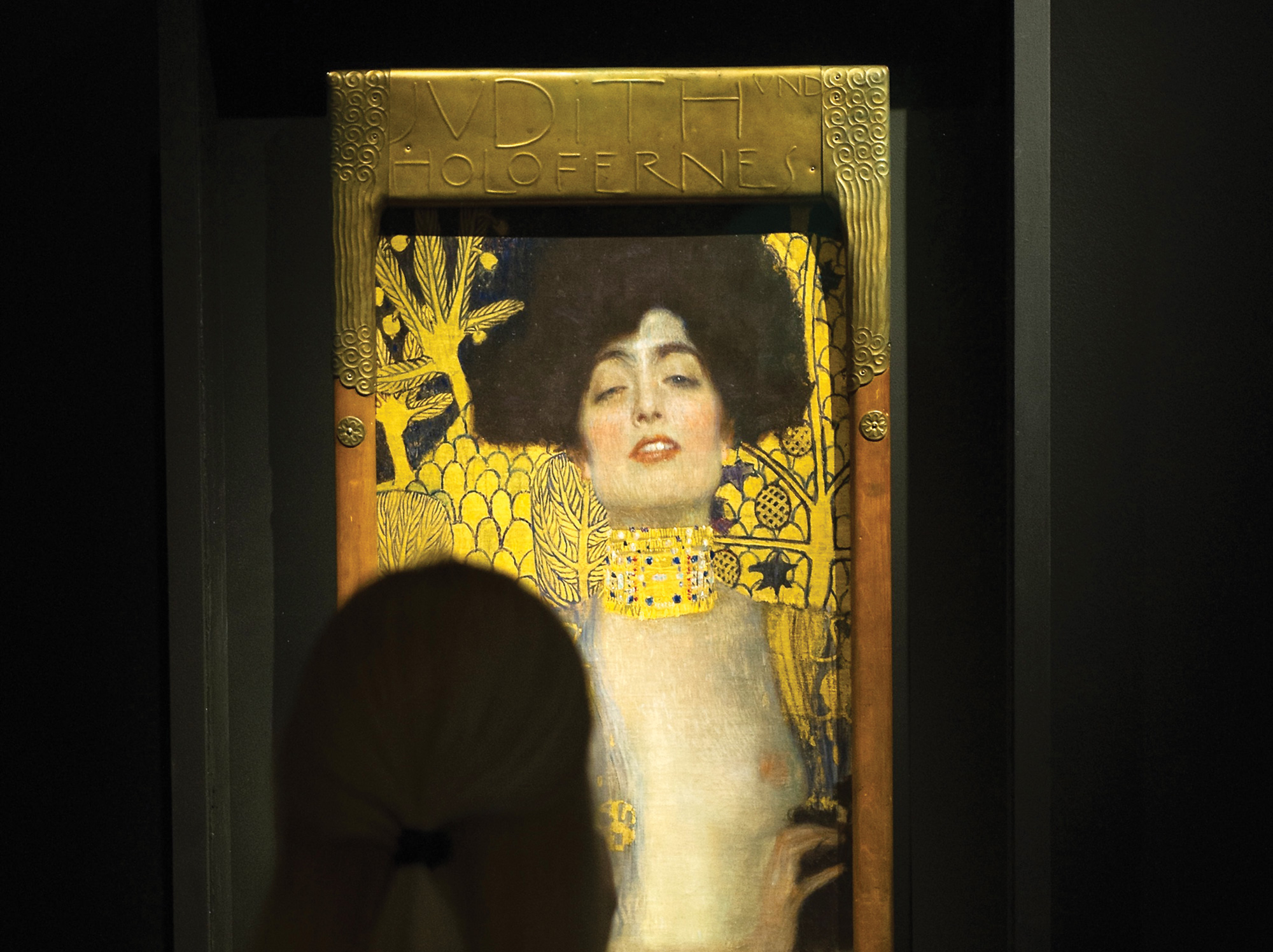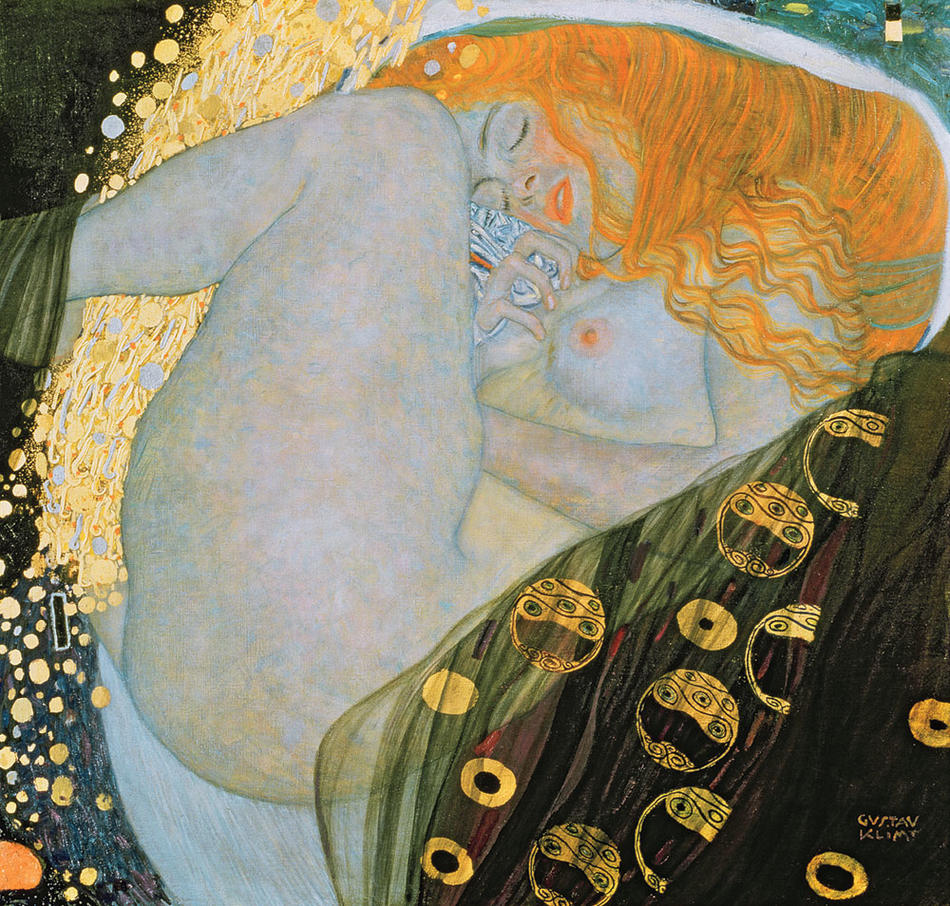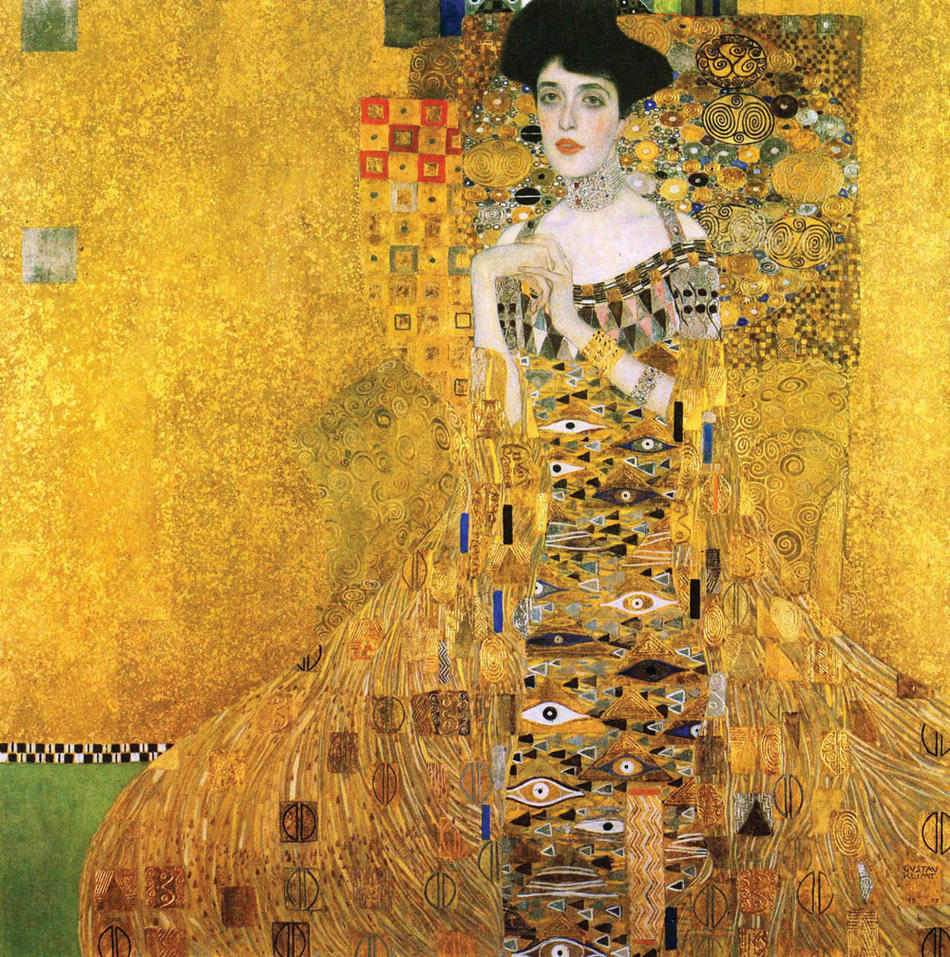
Gustav Klimt is essentially an art nouveau artist. He influenced Oskar Kokoschka, the first great Austrian expressionist painter, and Kokoschka later influenced Egon Schiele, who carried expressionism even further. These three artists were uncovering unconscious mental processes in their drawing and painting in parallel with Sigmund Freud and Arthur Schnitzler, who were doing so in their writing. All of them, through their connections in Vienna’s salons, were influenced by Carl von Rokitansky, the head of the Vienna School of Medicine.
Rokitansky’s motto was “Truths are hidden from the surface.” He was attempting to make medicine more scientific; it really hadn’t been before. He told his students, “When you examine a patient at the bedside, all you have to go on is the history and physical examination. You hear sounds coming from the heart, but you don’t know what those sounds mean. Does an abnormal sound from the heart come from the aortic valve, from the tricuspid valve, the mitral valve?” They didn’t know in those days. The only way they could discover the answer was to correlate their findings from the bedside with what the patient showed in his autopsy after his death. In Vienna, unlike any other city in Europe, everybody who died in the general hospital was autopsied, and the autopsies were done by one person. Rokitansky collaborated with a great clinician, Josef Skoda, and they compared the autopsy results with what they had heard and seen at the bedside. They were able to make sense of the clinical examination and began clinical-pathological correlation, which is the basis of modern scientific medicine.
Rokitansky was later elected to parliament and became a spokesman for science and a public intellectual. His belief that you have to go deep below the skin to really understand what’s going on became the leitmotif that guided Freud, Schnitzler, and the three Viennese modernist artists. Don’t immediately believe what the patient thinks his illness is about: you have to dig deeper into the unconscious mental process. Freud developed psychoanalysis as a way to understand and explain the nature of unconscious drives.
Of course he missed a number of things. For one, he had limited insight into female sexuality.
But Klimt, a painter of the unconscious, had remarkable insights into female sexuality and was able to enrich our understanding of it. He appreciated that women had an independent sexual existence from that of men, and understood that sexuality is not a pure drive that always exists by itself, but can be fused with aggression. We see this in Klimt’s 1901 painting of Judith and Holofernes, which is singular in Western art. (Top of page.) In this story from the Jewish apocrypha, Judith, a modest widow, plans to save her people from Nebuchadnezzar’s general Holofernes, whose troops had laid siege to her small town near Jerusalem. She enchants Holofernes, he celebrates and drinks heavily, and she encourages him to take her to his tent. There she seduces him, he falls asleep, and she decapitates him. In Klimt’s portrait she hardly appears to be a modest widow. She is in a postorgiastic phase, fondling his head, which is barely visible in the corner. The picture, which fuses eroticism with aggression, is an unprecedentedly modern depiction of the femme fatale. Klimt reveals that the power of women can be frightening and, with the decapitation, anticipates Freud’s writings about castration anxiety.
This cross-pollination of scientific and artistic ideas was carried further by Klimt’s presence in the salon of Berta Zuckerkandl, whose husband, Emil Zuckerkandl, was a great anatomist and pathologist who worked with Rokitansky. Berta was an art historian, an art critic, and an enthusiastic supporter of Klimt. The Zuckerkandls introduced Klimt to biology, and he became fascinated with it. He read Darwin, attended Rokitansky’s lectures and dissections, looked through the microscope, and began to incorporate images of cells and other structures into his paintings. The oval shapes you see as decorative elements in some of the paintings were meant to represent ova, for instance, and rectangular shapes were his symbols for sperm.
You see this in his painting The Kiss, and most explicitly in the painting Danaë, wherein Zeus impregnates Danaë in a shower of golden coins. Rectangular symbols indicate that the coins are really sperm. She’s like a reproductive machine; as the viewer moves from the left side of the canvas to the right, Danaë turns the rectangular sperm and circular ova into fertilized embryos, symbolizing conception.
One of the cornerstones of psychoanalytic thought is that the way to explore other people’s unconscious minds is to first explore your own. The Interpretation of Dreams is essentially Freud’s self-analysis. Klimt never painted any self-portraits or even portraits of men. He painted women exclusively.
By contrast, Kokoschka did a number of self-portraits and depicted himself in a very honest way, particularly in The Tempest. There he painted himself with his lover, Alma Mahler. She is depicted as calm amidst a storm, serene and asleep, whereas he is collapsed in rigid and helpless anxiety. This theme of vulnerability and self-exposure is carried to an extreme by Schiele, who constantly depicts himself, often nude, to explore existential anxiety — the conflicts of everyday life.
We, the beholders
These interactions of artists with medical and biological modes of thought raised the question: how do you bring artistic and scientific understanding together?
Freud tried, but wasn’t successful. The first person to succeed was Alois Riegl. One of the leaders of the Vienna School of Art History, Riegl wanted to make art history more scientific and to align science with psychology. He thought that the scientific aim of the art historian should be to explain how the beholder responds to a work of art. Riegl showed that in the Renaissance a lot of paintings were inwardly directed both psychologically and pictorially. (He used Masaccio’s Trinity in Santa Maria Novella in Florence as an example of a painting that did not attempt to bring the viewer into the picture’s narrative.) Later, in the paintings of Frans Hals and other Dutch painters, figures point outward and bring the viewer in. The psychoanalyst and art historian Ernst Kris and the art historian Ernst Gombrich together directed themselves to the beholder’s response. They argued that any work of art is inherently ambiguous; each of us has different interpretations. We, the beholders, recapitulate in our own heads the artist’s creative steps, albeit on a lesser scale.
This was a profound insight, because it pointed out that the brain is a creativity machine. It gets incomplete information and structures it in a realistic way. Some of this is determined by our genes; that’s why we all see the universe pretty much the same way. But there are important individual differences that are determined in part by our own experience, such as the way we resolve ambiguous stimuli. Gombrich picked up on this theme, which Kris developed by focusing on ambiguous figures and showing how we could look at something and be completely tricked by what we see. In a sense, an important part of figurative painting involves convincing the beholder that the two-dimensional canvas actually conveys three-dimensional information. This is key: it opens up a way for biology to help explain how the beholder reconstructs the image in his or her mind.
The face that launched $135 million
When you stand in front of a work of art, you often feel a sense of simulation. You feel it in your body. There’s reason to believe that mirror neurons mediate a component of that. (See sidebar, next page.) Other areas of the brain are involved in empathy — how you respond to emotional aspects of facial expressions.
We even have an idea of why people fall in love with works of art. What accounts for Ronald Lauder’s paying $135 million in 2006 for Klimt’s portrait of Adele Bloch-Bauer, the painting on the dust jacket of The Age of Insight?
Love of art involves a number of brain systems, but it particularly involves the brain chemical dopamine, which modulates almost all components of enjoying a work of art. The dopaminergic system is recruited for love, for addiction, for food, for sex — all positive, pleasurable reinforcements. If you show somebody a picture of his or her love object, the dopaminergic cells fire very actively. If you’re rejected in a romantic relationship and you’re shown a picture of your unrequited love, the cell response is even wilder.
I’ve been asked if this reductionist approach risks taking the magic out of art. To me, not in the slightest. We know a lot about the heart, for instance: we know it’s a muscular pump, we know how it works, we know how to fix it. Does it make it any less romantic? If you read Karl Vietor’s commentary on Goethe’s Faust or Harold Bloom’s on Shakespeare, it helps you understand the work of those poets better, but it doesn’t take the magic out of your aesthetic response. An analysis is an additional insight into certain aspects of the art. It works in parallel with other processes.
There are other people who feel that as neurobiology comes along, psychology is going to become passé. I don’t for a moment feel that way. Without good psychology, you can’t have meaningful neurobiology. Without a psychology of perception, where can neurobiology of vision begin?
It’s obvious that artists are psychologists. They have insight into human nature.
Closing the circle
I am Viennese, and I am interested in Vienna for obvious reasons. But my involvement with it is complicated. I have great disdain for the Vienna of 1938 and 1939, a terribly traumatic period for me. In part, my book is sort of an attempt to come to grips with posttraumatic stress, to work it through. My wife, who was hiding in the south of France during the war, has a similar obsession. She also had more difficult experiences than I. But because the French were more helpful to Jews than the Austrians were, she has a more positive attitude toward the French than I have toward the Viennese.
My attitude toward contemporary Austrians is changing, however, because they are changing. When I won the Nobel Prize in 2000, the phone rang off the hook. A lot of the calls were from Vienna. One newspaper reporter said, “Ah, isn’t it wonderful: another Austrian Nobel Prize.” I reminded him that this was an American Nobel Prize — an American Jewish Nobel Prize.
I was soon contacted by the president of Austria at the time, Thomas Klestil, who wanted to know how his country could recognize me. I told him that recognition was not what I needed. What I wanted was to have a symposium at the University of Vienna on the response of Austria to National Socialism. Klestil put me in touch with the minister of culture, who set aside the necessary funds. With the help of my friend and colleague Fritz Stern, we organized what turned out to be a strong and interesting symposium.
But while I was there, I was struck that the University of Vienna sits on the part of the Ringstrasse called the Karl-Lueger-Ring, named for the turn-of-the-century mayor of Vienna whose anti-Semitic platform was such an inspiration to Hitler that he adopted it himself. Several of us began to publicly object to the idea that the university should sit on a street with such a name, and we urged them to change the name to Universitätsring — University Ring.
The Austrians waltzed around the decision for years. Finally, just this spring, the city council, with support from the current president of Austria, Heinz Fischer, a marvelous progressive leader, approved changing the name. The old signs have come down and the new signs have gone up.
Monkey see, monkey fire neuron
There is a large area of the brain that is concerned with faces. Scientists have done imaging experiments demonstrating that a certain area lights up when you show a subject a face, but not, say, when you show pictures of a house. Others have done imaging experiments with macaque monkeys.
The monkey experiments are fascinating. If you show a monkey the face of a monkey, a cell fires. If you show a monkey a cartoon of the face, it fires even more dramatically, because the image is an exaggeration. But you have to show the monkey the entire face: if you leave out the mouth or the eyes, the cell doesn’t respond. Nor do cells respond if you turn the face upside down. But if you exaggerate the face by pushing the eyes apart or pulling them closer together, the cells go wild.
In 1996 the Italian neurophysiologist Giacomo Rizzolatti discovered that there are other areas of the brain in the supplementary motor cortex involved in responding to simulation. There are two areas that have a population of cells called mirror neurons that respond in a monkey’s brain (and perhaps in the human brain) not only when the monkey picks up a peanut, but when you pick up a peanut. They respond to other people’s actions.




